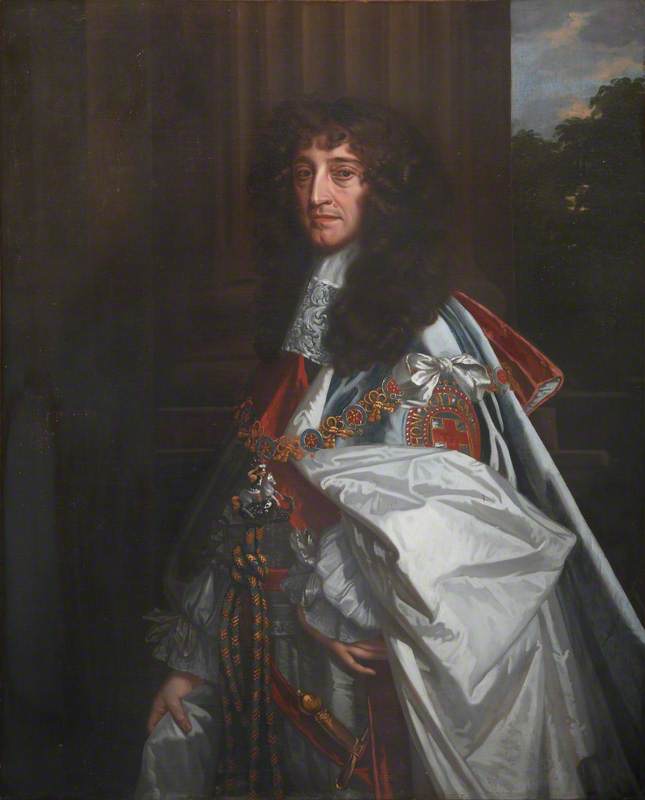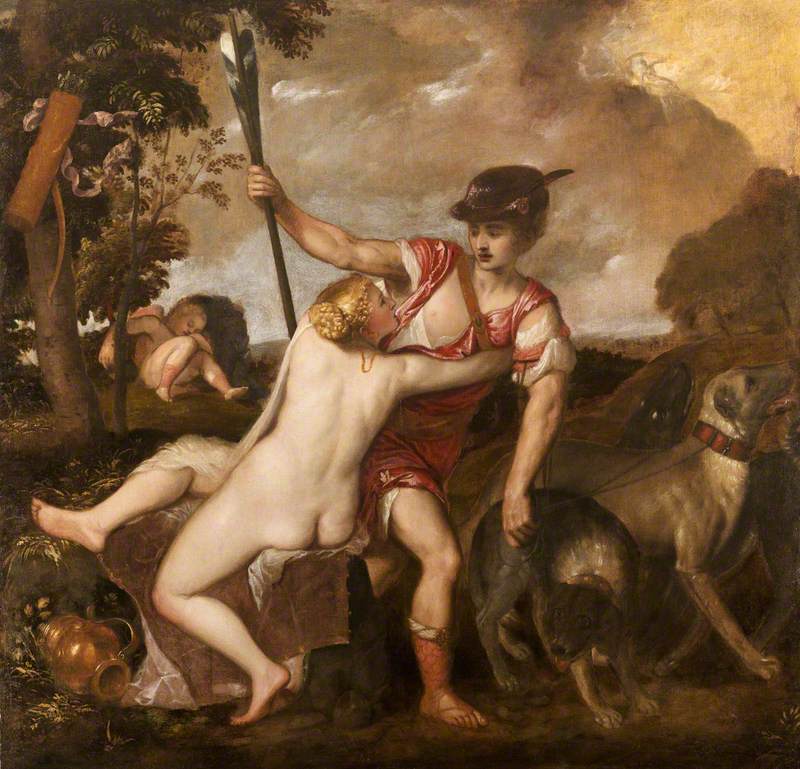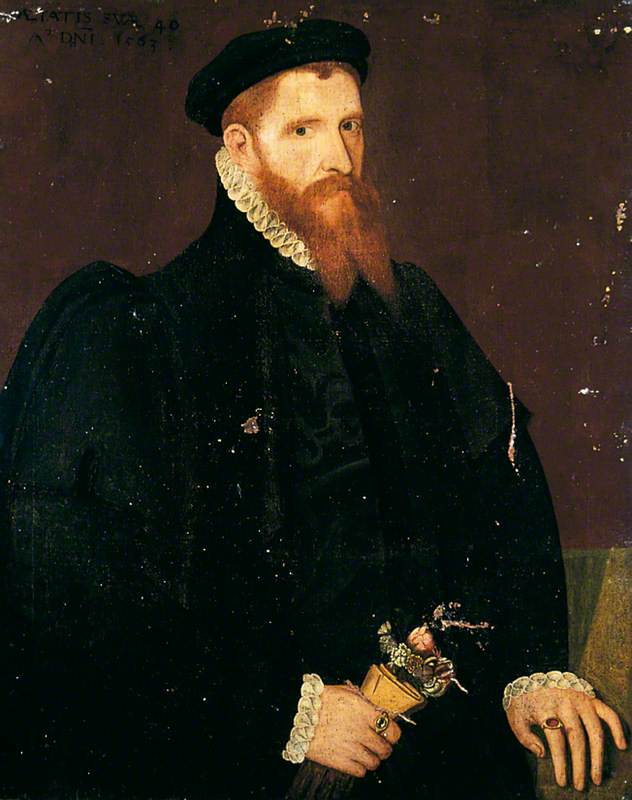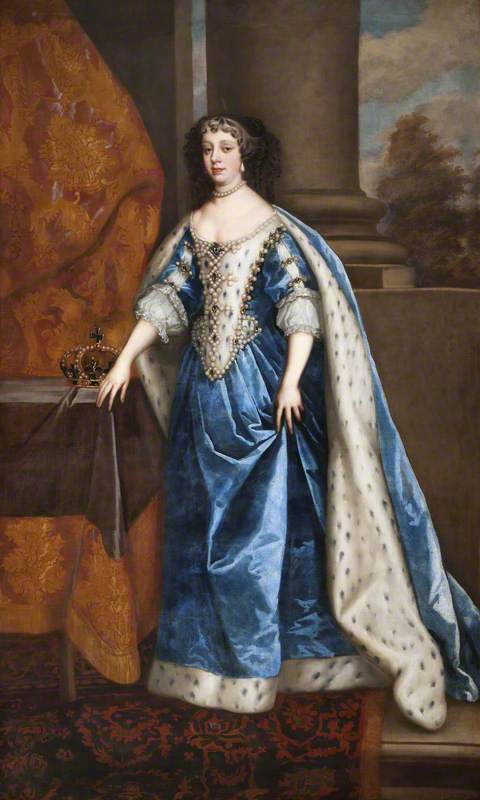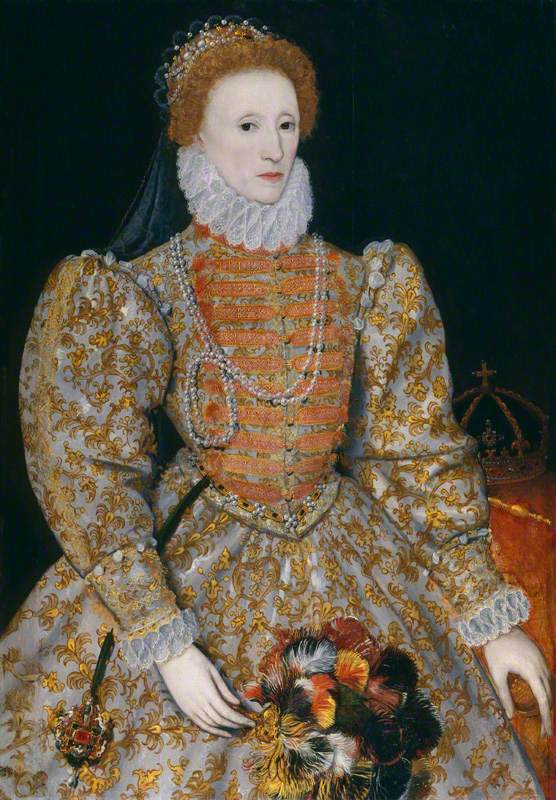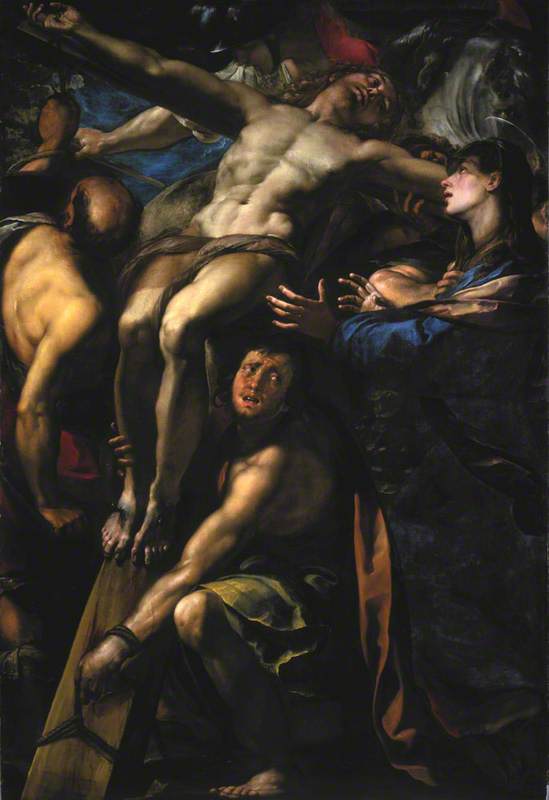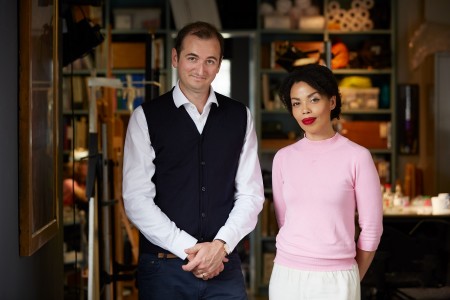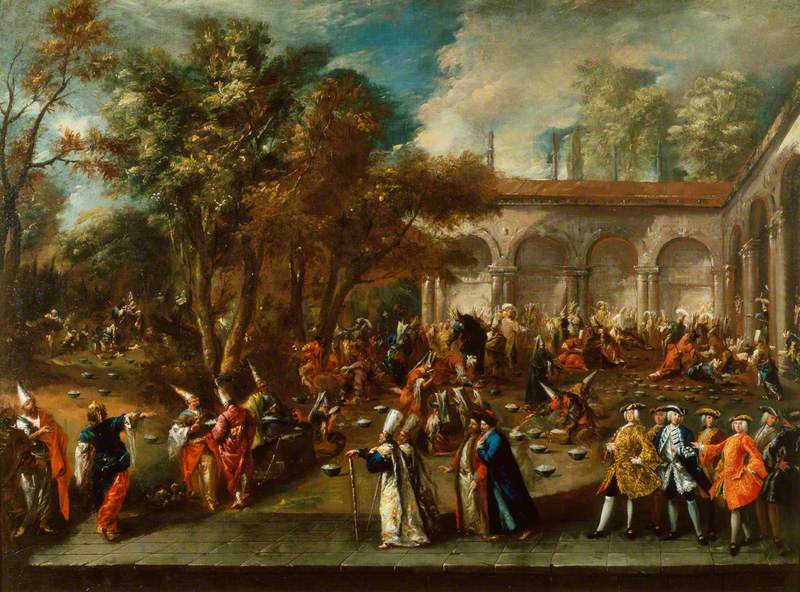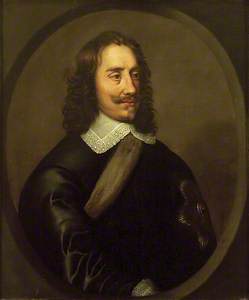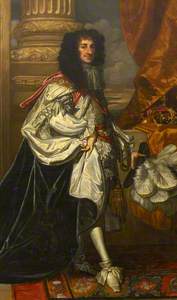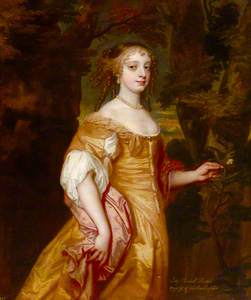Peter Lely (1618–1680), the Dutch-born artist once described by art critic Jonathan Jones as a 'Baroque bad boy', earned his fame and fortune as the principal painter to the English royals.
He became court painter to Charles I in the 1640s, before serving Oliver Cromwell (very famously painting him 'warts and all'), and finally Charles II after the Restoration of the monarchy in 1660.
Lely painted during a turbulent and bloody time in British history, witnessing the growing political and religious divides and widespread discontent, resulting in the English Civil War (1642–1651) when his first royal patron, Charles I, was executed at Whitehall in 1649.
An artist who trained in Haarlem like his close contemporary Frans Hals, Lely arrived in Britain in 1643 as an ambitious young artist who hoped to replace Anthony van Dyck as court painter. Van Dyck, who had died two years prior, left a profound influence on Lely whose formal portraiture took on a similar resemblance.
Lely spent his first several years in England working for the Flemish portraitist and art dealer George Geldorp. In 1647, he became freeman of the Painter-Stainers' Company and was appointed portraitist to Charles I.
As Caroline Campbell of The National Gallery has noted, the success of Lely was down to the fact that the artist was 'a pictorial magpie: picking up ideas and motifs from any number of sources, but uniting them in a fashion which combined the Italian Renaissance and the Dutch Classicist movement, but in a more Baroque and showy manner.'

Image credit: National Trust Images
Lady Anna Maria Brudenell (1642–1702), Countess of Shrewsbury 1665–1670
Peter Lely (1618–1680)
National Trust, ClivedenLely also gained a reputation for aggrandising and 'flattering' his sitters, and subsequently received countless portrait commissions from the British royals and aristocracy throughout his life, which he could complete speedily with the help of his many pupils. He shrewdly managed to circumnavigate the tense political situation in a divided country, avoiding imprisonment (or potentially death) as a former royalist, and ensuring that he was always in favour with whomever had political control.
Upon his death in 1680, Lely left thousands of surviving portraits (often attributed to his studio or followers), hundreds of which can be found in public collections across the UK. Continue scrolling to discover some of the highlights on Art UK.
The Concert
One of Lely's earliest works, created in the 1640s, The Concert is housed in the Courtauld Gallery.
In this idyllic scene, a group of musicians sit in an arcadian setting in sumptuous robes. The work is famously a self-portrait, with Lely represented as the figure playing the bass violone and wearing the red hat.
Next to him, a semi-clothed (bare-breasted woman) stares at the viewer. Behind her, another woman points to a piece of jewellery hanging from her neck, while another stands behind Lely, one arm raised enigmatically in the air as if she is moving to the music.
Susanna and the Elders
Created between 1650 and 1655, Lely's Susanna and the Elders belongs to Tate's collection (an earlier version appears in Birmingham Museums Trust and another in Burghley House).
The Biblical tale from the Book of Daniel was a popular subject matter for artists during the sixteenth and seventeenth centuries, including Guido Reni and Artemisia Gentileschi.
In the story, a young Hebrew wife, Susanna, is desired by two elders of her community who spy on her while she bathes. They threaten to accuse her with adultery unless she consents to sleep with them (which she refuses). Daniel's wisdom tricks the elders into revealing their lie.
In Lely's depiction, Susanna's surprise is captured as the two men leer and try to touch her. The central figure of Susanna is illuminated from an undetected light source, and in typical Lely fashion, a Baroque setting (curtain and sculpture) frames the figures.
Charles I
Lely painted Charles I numerous times in the late 1640s, though there exist many copies in UK collections. This portrait painted after Lely's original commissioned in 1647 is housed in the Ashmolean Museum of Art and Archaeology, Oxford.
This version includes only one half of an original double portrait, which had presented Charles I alongside his young son the Duke of York (who later became James II of England and James VII of Scotland). Throughout most of 1647, Charles was in custody, first under the Scots and later handed over as a prisoner to the Puritan New Model Army under Oliver Cromwell.
The last portrait by Lely of the ill-fated King, it was most likely captured during his internment at Hampton Court Palace (after his escape to the Isle of Wight).
Nymphs by a Fountain
In the early 1650s, not long after the execution of Charles I, Lely created Nymphs by a Fountain, today found in Dulwich Picture Gallery.
In this allegorical painting, nude and semi-clothed female figures recline in a harmonious slumber. The work has been likened to Van Dyck's Cupid and Psyche (Royal Collection) and was previously attributed to Peter Paul Rubens, though it was attributed to Lely when found in his collection upon his death.
In the early 1650s, Lely was the most commercially successful painter in Britain and was inundated with portrait commissions. According to the artist's contemporary, the poet Richard Lovelace, 'Lely always regretted the fact that he had so little opportunity to paint Arcadian scenes like this one.'
A similar work by Lely titled Cimon and Iphigenia is housed in Knole, National Trust.
Elizabeth Murray, Countess of Dysart
In Lely's portrait of Elizabeth Murray the Duchess of Lauderdale and Countess of Dysart, the sitter stands next to an unidentified Black servant, reflecting Britain's involvement in the transatlantic slave trade.
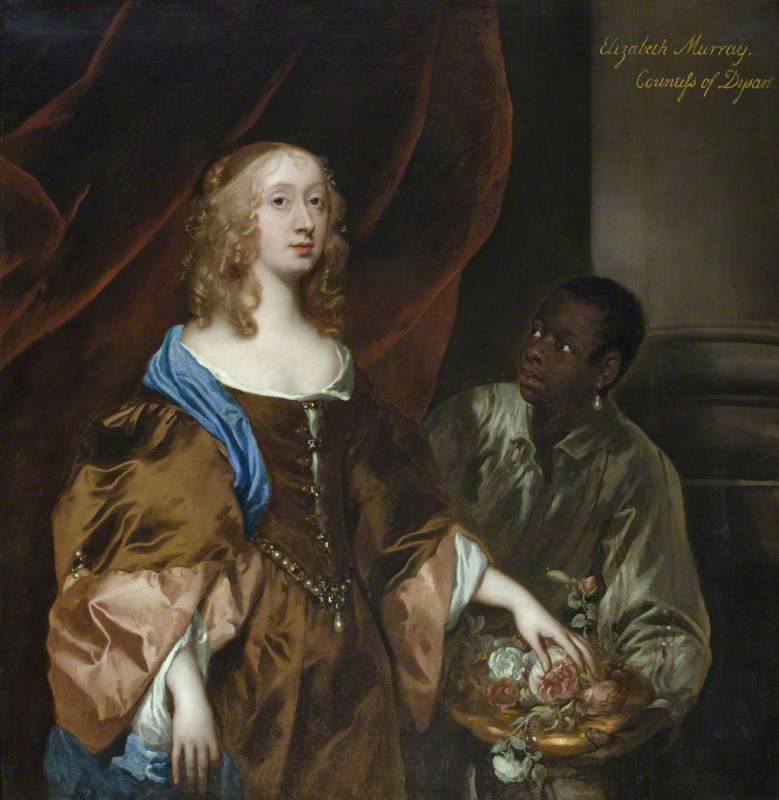
Image credit: National Trust Images
Peter Lely (1618–1680)
National Trust, Ham HouseThis type of work is not uncommon for this era and it encapsulates the seventeenth-century fashion for aristocrats to be presented next to Black individuals, as a way to demonstrate their status, wealth and whiteness. The work can be viewed in the National Trust's Ham House on the banks of the River Thames.
During Cromwell's Commonwealth, Elizabeth Murray had offered her support to Charles II during his exile in Paris, and was a member of the Sealed Knot, a covert group that plotted to reinstate the monarchy.
Oliver Cromwell
One of Lely's most famous portraits is his depiction of Oliver Cromwell created between 1653 and 1654, when the military leader was serving as Lord Protector of the Commonwealth.
This work is unflattering and distinctly less royal in appearance than Lely's previous portraits; it is plain compositionally and there is little ornamentation to distract the eye from Cromwell's determined stare.
The plainness of style mirrors the pious Puritan values of the sitter, but it is also a well-known fact that Cromwell had offered the painter some advice: 'My Lilly (Lely), I desire you would use all your skill to paint my picture truly like me, and not flatter me at all. But [pointing to his own face] remark all these ruffness, pimples, warts and everything as you see me. Otherwise I never will pay a farthing for it.'
James II and VII
In 1661, Lely captured the likeness of the Duke of York, who in 1685 became James II of England and VII of Scotland. James spent several years in exile in Paris, living at the court of his brother Charles II.

Image credit: National Galleries of Scotland
James VII and II (1633–1701), Reigned 1685–1688, as Duke of York c.1661
Peter Lely (1618–1680)
National Galleries of ScotlandThe portrait was captured one year after James had secretly eloped with Anne Hyde, whose brother Sir Edward Hyde commissioned this portrait from Lely. James is depicted in military attire within a Baroque setting. His left hand points towards his own name, which is inscribed to his right and visible within the painting.
Portrait of an Unknown Woman
This portrait by Lely from the 1670s shows an unidentified female sitter before a richly adorned curtain.
Her left breast is revealed and her gaze meets the viewer. The semi-nudity of the portrait suggests this woman was the mistress of a powerful man, who had perhaps commissioned this portrait from Lely.
The words 'Duchess of Cleveland' faintly inscribed next to the sitter was believed to have been added around a century after the portrait's commission.
Barbara Villiers
Although the identity of the former portrait is disputed, it bears a striking resemblance to Barbara Palmer, the Countess of Castlemaine and Duchess of Cleveland, the favourite mistress of Charles II during the 1660s, who was more commonly known by her maiden name 'Barbara Villiers'.
At the age of 18, Villiers had married Roger Palmer in 1659, but began her affair with Charles the following year, around the same time that he was restored to the throne in May 1660.
A divisive figure in Restoration Britain, Villiers had been painted by Lely numerous times, usually at the request of the King. She was known for her beauty, and quite possibly Lely took influence from her resemblance when creating portraits of other women.

Image credit: National Trust Images
Barbara Villiers (1640–1709), Countess of Castlemaine and Duchess of Cleveland c.1662
Peter Lely (1618–1680)
National Trust, KnoleLely had also painted the courtesan Moll Davis, the actress, singer and mistress of Charles II.
Davis was dismissed by Charles when his affections turned towards Nell Gwyn, who had also been depicted by Lely.
Charles II
On the topic of Charles II, Lely created this full-length portrait of the restored monarch in 1670 – one decade after he returned to Britain to take back the throne.
In 1661, Lely had officially become Principal Painter to Charles II and was given naturalisation the following year.
In royal fashion, Charles wears the Garter robes and regalia serve as symbolic props on the right-hand side. His head is adorned with a large wig that rivals the enormity of the one worn by the French king, Louis XIV.
Aphra Behn
Among the hundreds of Lelys on Art UK's database is this portrait of Aphra Behn housed in the Yale Center for British Art.
An intriguing celebrity and literary figure of the Restoration period, Behn was a notable playwright, poet and novelist who was employed directly by the King and was even recruited by the Crown to be a political spy in Antwerp. For much of her career, she wrote under the pseudonym 'Astrea' to disguise her identity.
The mystery of Frances Vaughan
Dated to 1650, this portrait of Frances Vaughan, Countess of Carbery had previously been attributed to Lely. The sitter died in childbirth in the same year, leading some art historians to believe that this portrait was finished posthumously.

Image credit: Simon Gillespie Studio
Frances Vaughan (d.1650), Countess of Carbery c.1650
Peter Lely (1618–1680) (attributed to)
Carmarthenshire Museums Service CollectionHowever, after extensive research and scientific analysis, it was discovered and announced on an episode of Britain's Lost Masterpieces (first aired in 2017) that the work was in fact a copy made by Mary Beale.
The show's presenters, Bendor Grosvenor and Emma Daibiri, revealed the restored version of the portrait at the Carmarthenshire County Museum where it hangs today.
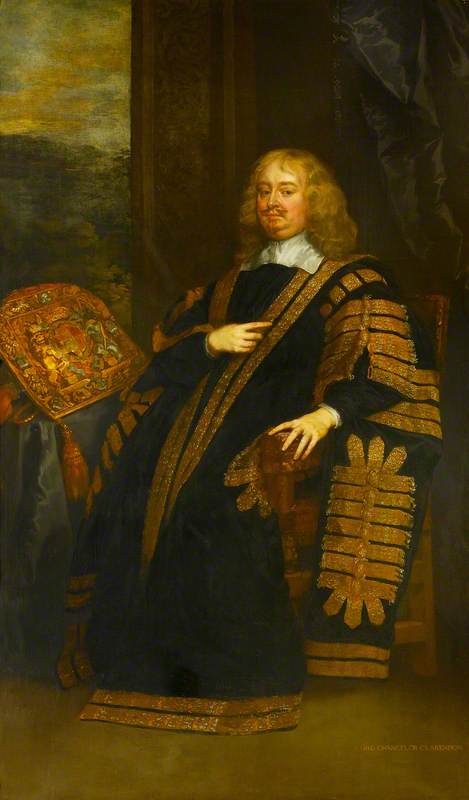
Image credit: The Chequers Trust
Edward Hyde, 1st Earl of Clarendon (1608–1664), Lord Chancellor
Peter Lely (1618–1680)
The Chequers TrustThroughout Lely's four-decade career as one of the most important portraitists in Britain, he captured the likeness of almost every high-ranking and influential individual. Lely was not only an artist but a political tool of the monarchs. As demonstrated in exhibitions such as Tate Britain's 2020 'British Baroque: Power and Illusion', the king and his courtiers employed Lely strategically, cultivating a visual iconography that would legitimise their power and claim to the throne at a time when this authority was being undermined.
Towards the end of Lely's career in the 1670s, he saw the rise of a rival, the younger artist Godfrey Kneller, but remained the favourite painter of the royals and was knighted in 1680 – the year of his death. Today, art historians credit Lely for his efficient studio practice, which stood as a precursor to the artist's studio practice today. However, in his own time, Lely's 'reputation was seriously damaged by portraits that came from his studio under his name but without much of his participation.'
Upon his death, Lely left behind thousands of paintings and drawings, including priceless works by Old Masters from his sizeable art collection. The sale of his collection after his death became one of the most important public auctions of artworks of the seventeenth century.
Lydia Figes, Content Editor at Art UK























